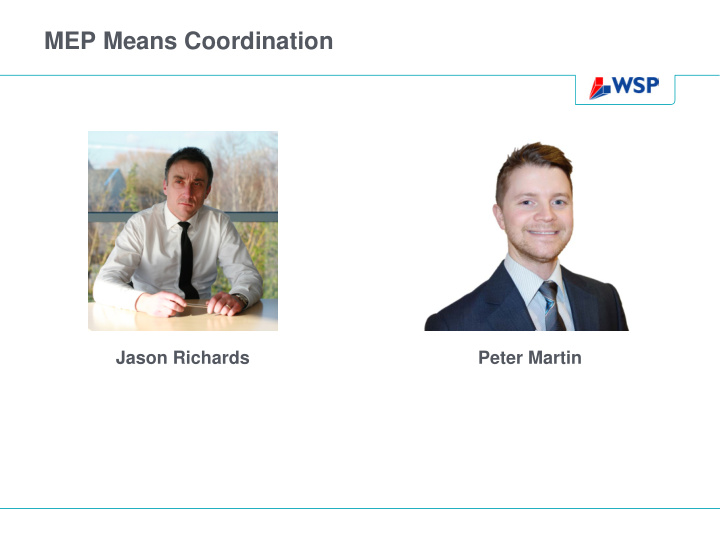



MEP Means Coordination Jason Richards Peter Martin
MEP Means Coordination
Western Link, Hunterston & Flintshire Bridge £1 billion project bringing renewable energy from Scotland to England and Wales. Project will play a key role in helping the UK meet its renewable energy targets. Project includes DC subsea and underground cables, incorporating a converter station at each end.
Marine Cable Marine cable is 385km long. Longest 2,200MW capacity high voltage direct current cable in the world. First subsea link to use a DC voltage level of 600,000 volts. Sufficient electricity to meet the needs of around 2,000,000 people.
Converter Stations Stations convert DC electricity to AC to allow use in existing National grid system. Equipment had to be located internally to protect from the coastal salt damaging environment. Design for the converter stations was undertaken using Revit.
Federated Model Multi-discipline design involving Architects, Structural, MEP and client appointed specialist engineers. Multiple buildings were spread across two sites so shared coordinates had to be agreed and published to maintain alignment.
Thermal Modelling – Internal Environment Electrical equipment has very high heat gains. Natural ventilation was preferred but unachievable due to extreme external design conditions.
Thermal Modelling – Occupant Comfort Project Engineering Challenges Lessons Learnt/Benefits Large Residential regeneration Site wide electrical demand could not CIBSE TM52 criteria used to assess project – First development site; 6 exceed existing. overheating risk. blocks consisting high-rise, Emphasis placed on passive design External solar shading devices maisonettes and extra care facility. features to reduce the need for modelled in IES to mitigate use of cooling; hence lower electrical cooling. demand.
Plantrooms Subsequent to thermal modelling natural ventilation was ruled out. All air mechanical ventilation system Large ducts to coordinate in small plant space. Revit enables detailed solution that would be impossible in 2D.
Air Handling Units Very large Air handling units had to be accommodated. 4no. units 9.3m (L) x 6.5m (W) x 3m (H), 33 tonnes each supplying 42m 3 /s. Early collaboration with Structures in order to accommodate air handling units in model.
2D Problem Coordination of services with sensitive electrical equipment clearance zones. Any outages are business critical and would have serious implications. Clearance requirements based on record 2D sectional drawings.
3D Solution Created 3D Spheres in order to provide a visual aid and a means of clash detection. Real time model fly through presented to other disciplines to demonstrate coordination.
MEP Model Demo Valve Hall – Ductwork drops coordinated around clearance zones, ductwork sizes, AHU plantroom duct external – had to get all fresh air intakes to one side and exhaust on other side to prevent cross contamination of air. AHU plant room internal – provide internal 3D view of plantroom, any visible space left is retained for maintenance and access requirements of the air handling units.
Recommend
More recommend